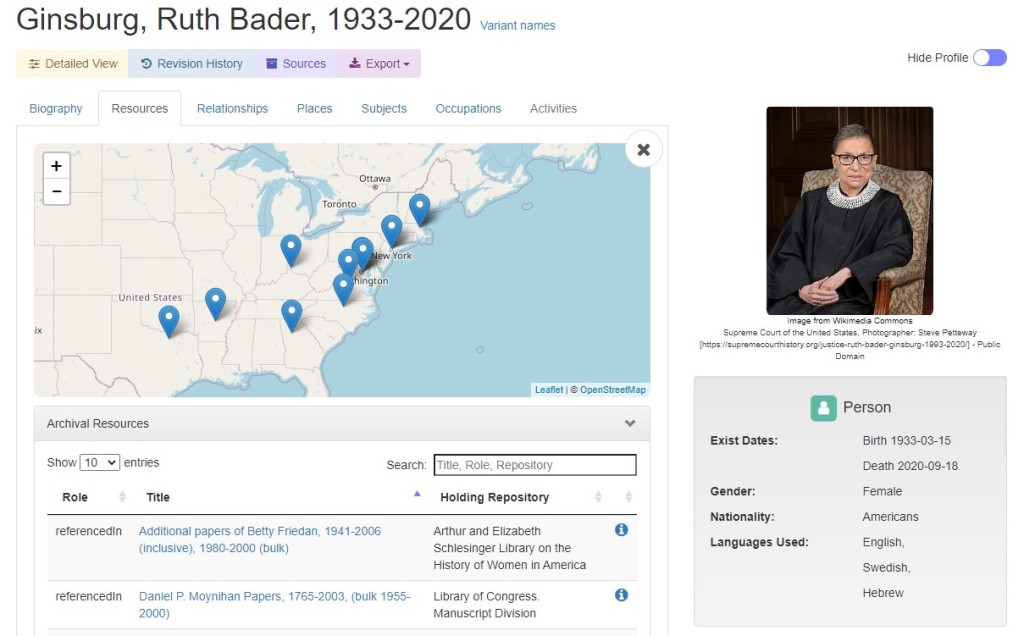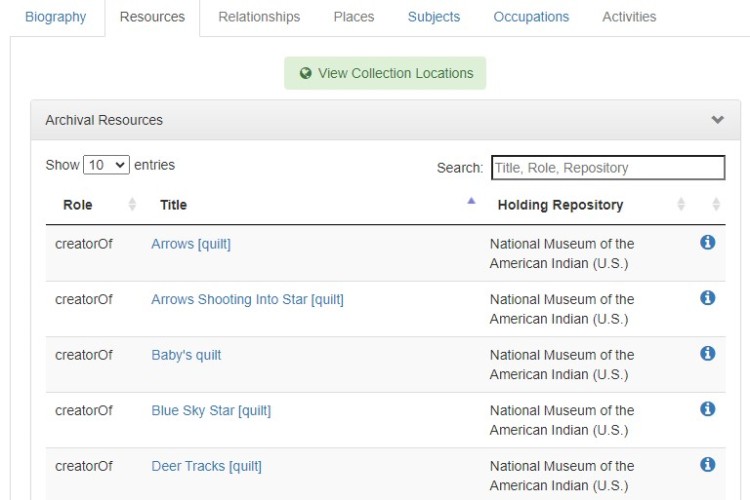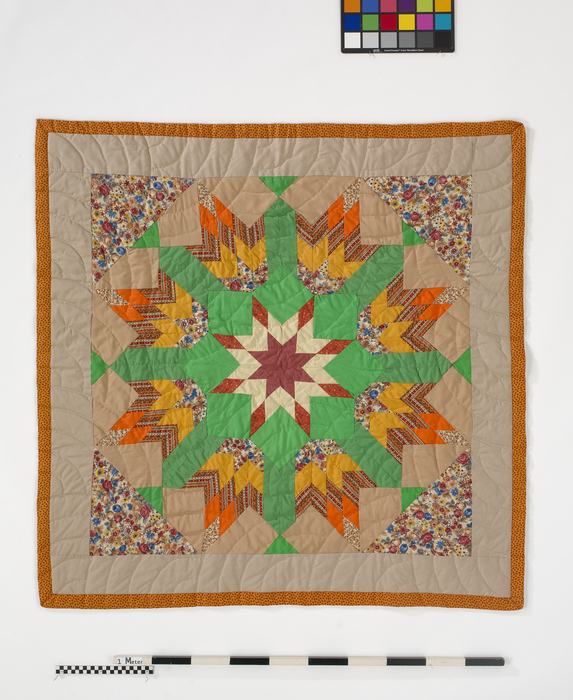By Dina Herbert
Founded over ten years ago, SNAC looks forward to its next phase of work. SNAC, or Social Networks and Archival Context, is a free online research and knowledge discovery resource. It helps users discover biographical and historical information about persons, families, and organizations that created, or are documented in, historical resources, as well as their connections to one another. Users can search archival collections worldwide in just one place; it’s a response to the archival diaspora.
With an undercurrent of EAD (Encoded Archival Description) and EAC-CPF (Encoded Archival Context – Corporate Bodies, Persons, and Families), SNAC allows for cross institutional conversations within finding aids. As the cooperative grows, more finding aids are ingested into the system to create documentary social networks among creators and other subjects of primary source collections. It’s a way to connect a creator with their resources all over the world, and also with resources that researchers might not even expect to find.

Revising and Repairing Description
In the past few years, SNAC turned intentional focus on traditionally underrepresented groups in archival collections, reimagining how to make these resources more accessible. Two SNAC focus groups dedicate thought to elevating description of such populations: enslaved peoples and Indigenous peoples.
Under the leadership of former SNAC Director, Daniel Pitti, and genealogist and documentarian of the slave era, Bernetiae Reed, the Enslaved Description Working Group looks at ways to not only enhance connections between enslaved persons and enslavers but to also better describe the work done in their lifetimes. A question the group grapples with is describing an enslaved person’s name: surnames are often chosen for them by their enslavers, dates of life events are seldom found, and family lines cross borders. Similarly, EAC-CPF allows us to give people occupations, but enslaved people weren’t just simple employees. The SNAC Enslaved Description Group works to develop policy and create naming examples to guide SNAC editors as they describe enslaved persons, and as they present related connections to other entities in SNAC.

For Indigenous Americans, the United States government has handled events and records related to this diverse group in a troubling way. Traditional archives, museums, and libraries have used colonialist language when describing archival materials related to Indigenous groups and have prioritized western naming conventions and languages. Under the leadership of Diana Marsh, a professor at the University of Maryland iSchool, #IndigenzeSNAC appeared on the scene. Collaborating with Indigenous community leaders across the country, the SNAC Indigenous Description Group (IDG) emerged within the SNAC Cooperative. This group was purposefully formed to include a majority of Indigenous archivists and librarians, and has the charge to address the concepts of tribal identity, naming conventions, and Indigenous languages in SNAC.
As an example of a SNAC record for an Indigenous person, we can look at the artist Almira Buffalo Bone Jackson. Jackson was born in 1917 and made hundreds of quilts in her lifetime before dying in 2004. She was a member of the Red Bottom band of the Fort Peck Assiniboine. SNAC allows us to search resources she created, in this case quilts housed at the Smithsonian National Museum of the American Indian (NMAI). Similarly, we can see where she is referenced in an archival collection, also located at the NMAI.



The IDG is dedicated to making SNAC a more inclusive space for the description of Indigenous people, communities, and their archival materials. One example of a current project is adding more languages into SNAC to accommodate materials and names in the multitude of languages. SNAC is working with the Library of Congress to incorporate more language codes into their systems to increase connections through linked data. Another example is ingesting federally-recognized tribe names to create an authority for archivists working with the Indigenous materials; SNAC records serve as a name authority for these tribes and set a standard for working with Indigenous materials. A third example is the painful yet important history of Indian Boarding Schools in the U.S. SNAC is prioritizing creating and updating records of these schools in order to ensure all have access to archival information related to this terrible part of American history.
New Projects
SNAC is now moving into the next phase of our work. Under the new Director, Susan Pyzynski (formerly of Harvard’s Houghton Library) we are moving into a fee-based membership model for 2024 onward. Browsing and searching SNAC will remain free; training, editing, and uploading finding aids will be part of the membership fee. A self-sustaining, fee-based model allows for new growth and staff development, including a new lead technical director. Some of the advancements we’ve made in the last few years have been technical and we’re excited to continue that work. Using an OpenRefine plugin, SNAC members can batch upload their finding aids and connections to SNAC. We offer training to learn how to create and edit records in SNAC and how to use SNAC for research.
One more update: SNAC’s new ArchivesSpace plugin feature rolled out on September 19. This feature allows seamless and simultaneous push and pull from ASpace and SNAC.
We are excited to see what SNAC’s next era will bring!
Dina Herbert is the National Archives liaison to Social Networks and Archival Contexts (SNAC) where she is responsible for working with partner organizations, editing SNAC, training, and more. Previously she served as the Innovation Hub Coordinator at NARA as the Librarian of the Iraqi Jewish Archive Preservation Project at NARA. She received degrees from Columbia University (BA), the Jewish Theological Seminary (BA, MA), and the University of Maryland (MLS). She lives in Alexandria, Virginia with her spouse and children.

